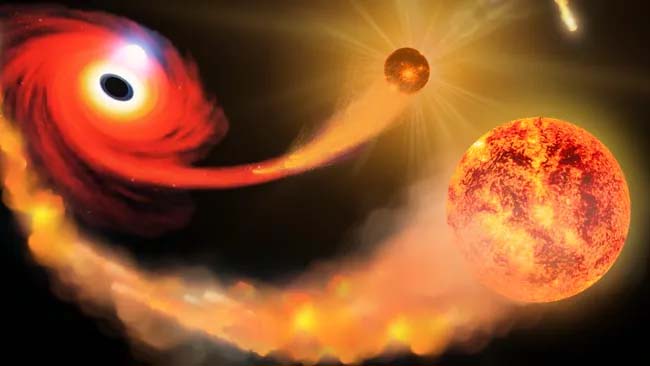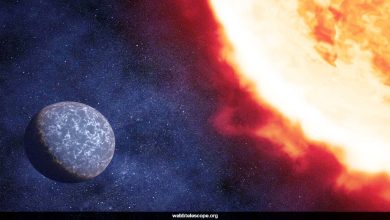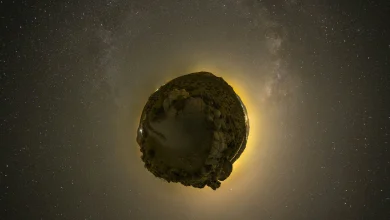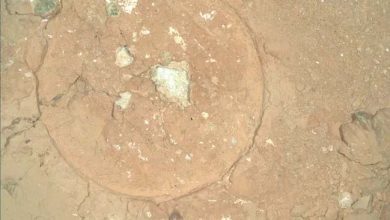The star escapes from the massive black hole, leaving its companion behind

Science: Astronomers have observed a supermassive black hole enjoying a meal of stars flash twice in a rare and powerful event. This double-flash tidal disruption event (TDE) may result from a black hole capturing binary stars, letting one escape, and then swallowing the other. If so, further observations of this event, called ASASSN-22ci, could solve the mystery of repeating TDEs.
TDEs are so powerful that they can be seen from billions of light-years away. What is not common, however, is to see a TDE explode twice or more. This makes ASASSN-22ci a rare and significant event — the result of a supermassive black hole located relatively close to Earth, about 408 million light-years away at the center of the galaxy WISEA J122045.05+493304.7. “To date only a handful of TDEs have shown multiple flares. Recent estimates suggest that the rate of these events may be about 15 to 20 times lower than that of normal TDEs,” team leader and University of Hawaii astronomer Jason Hinkle told Space.com. “While these events may be rare, they have the potential to have a major impact on our understanding of TDE physics, allowing us to study the early stages of TDEs in unprecedented detail.” ASASSN-22ci’s first flare was observed by the All-Sky Automated Survey for Supernovae (ASAS-SN) in February 2022. At first, it appeared to be an average “normal” TDE (if a star being eaten by a black hole can be called normal, it is normal!). However, 720 days later, when Hinkle and colleagues were following the event with ASAS-SN, the Zwicky Transient Facility (ZTF) and the Asteroid Terrestrial Impact Last Alert System (ATLAS), ASASSN-22ci surprised them by flaring again. Ironically, what makes ASASSN-22ci unique among repeating TDES is how “normal” it appears to be.





